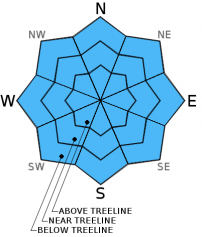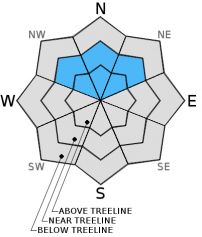| Wednesday | Wednesday Night | Thursday | |
|---|---|---|---|
| Weather: | Partly cloudy becoming mostly cloudy | Mostly cloudy with a 30% chance of scattered snow showers after midnight | Snow likely |
| Temperatures: | 28 to 35 deg. F. | 11 to 20 deg. F. | 28 to 35 deg. F. |
| Mid Slope Winds: | West | Southwest | Southwest |
| Wind Speed: | 15 to 20 mph with gusts to 30 mph in the afternoon | 15 to 20 mph with gusts to 30 mph | 15 to 25 mph with gusts to 30 mph increasing to 40 mph in the afternoon |
| Expected snowfall: | 0 | trace | 1 to 4 |
| Wednesday | Wednesday Night | Thursday | |
|---|---|---|---|
| Weather: | Partly cloudy becoming mostly cloudy | Mostly cloudy with a 30% chance of scattered snow showers after midnight | Snow likely |
| Temperatures: | 21 to 28 deg. F. | 11 to 19 deg. F. | 19 to 28 deg. F. |
| Ridge Top Winds: | West | West | Southwest |
| Wind Speed: | 10 to 15 mph with gusts to 25 mph increasing to 25 to 30 mph with gusts to 45 mph in the afternoon | 20 to 30 mph with gusts to 45 mph | 25 to 35 mph with gusts to 40 mph increasing to 50 mph in the afternoon |
| Expected snowfall: | 0 | trace | 2 to 5 |


























